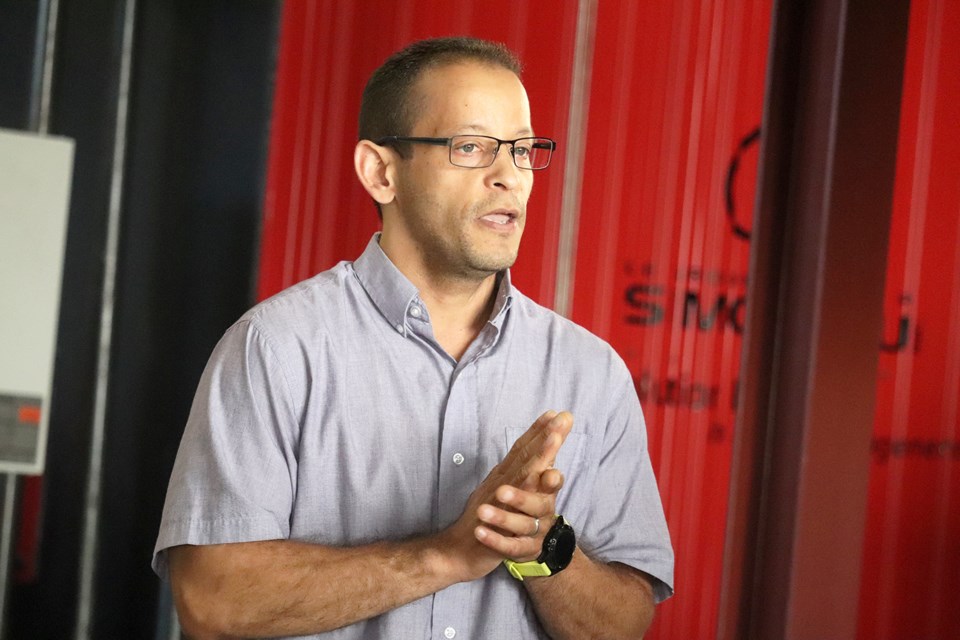The B.C. Government has announced new funding for the province's new CleanBC Government Buildings Program, with a goal to make more government buildings smarter and more energy efficient to help combat climate change.
Minister of Citizens' Services Jinny Sims made the announcement this morning (June 27) at the Prince George Downtown Renewable Energy System.
"The B.C. government is leading by example and walking the talk when it comes to building a better future for British Columbians," said Sims. "The new CleanBC Government Buildings Program will help government facilities consume less energy, reduce emissions, create local jobs and save British Columbians money."
Government buildings in the plan will include transition houses, correctional centers, warehouses, and ministry offices with the goal of creating facilities that are 80 per cent more energy efficient by the year 2050.
.@jinnysims announces $58 million over the next five-years to improve provincial buildings that will become more energy efficient in an effort to tackle climate change #govbc #cityofpg @bcndp @CityofPG @PGMatters pic.twitter.com/jFW90A0OEk
— jess fedigan (@jj_fedigan) June 27, 2019
The Prince George Downtown Renewable Energy System currently uses biomass to heat 10 buildings in the downtown area. It will also heat the new condo parkade which is under construction.
The courthouse in Prince George emit 30 per cent fewer greenhouse gasses in 2018, the government says, after being connected to the system.
Under the program from the B.C. government, the Prince George Courthouse will also be getting a new electric vehicle charging system as well as lighting improvements and retrofits to the current heating and ventilation systems.
The Prince George courthouse will also be receiving receiving a new electric vehicle charging system, lighting improvements and retrofits to the heating and ventilation system #cityofpg #pgmatters @PGMatters @BCGovNews @jinnysims pic.twitter.com/Wxy5msVKc1
— jess fedigan (@jj_fedigan) June 27, 2019
The government says more than $58 million will be invested over the next five years to improve numerous other provincial government buildings.
Improvements will include:
- Switching from fossil fuel to clean and renewable energy sources, such as wind, solar, geothermal, biomass and hydropower
- Using smart technologies to conserve energy, such as Wi-Fi building sensors to regulate lighting and real-time data displays
- Installing electric vehicle charging stations
- Undertaking energy retrofits in existing buildings, such as replacing heating systems and upgrading lighting
- Building new energy-efficient facilities, using green design and innovative technologies
- Making buildings more resilient to climate change by relocating and reinforcing equipment to protect against possible floods and wind, installing more HVAC systems and exterior drainage
- Creating flexible and modern work environments to support a growing mobile workforce
"Today's announcement by the Government of B.C. is a great example of what can be achieved when local and provincial governments work together," Prince George Mayor Lyn Hall said. "The city showed leadership seven years ago when it established a downtown energy system that supports local industry and business, which greatly reduces greenhouse gas emissions. Today, this system is the single greatest contributor to reducing greenhouse gas emissions from the city. Government has already documented savings of natural gas and carbon offsets worth more than $100,000 from having just two of its buildings connected."
Job creation and continued innovation in the building and technology sectors is another bonus to the program, the government says.
"The Canada Green Building Council commends British Columbia's CleanBC Government Buildings Program, which provides a path towards meeting its climate targets," Thomas Mueller, president and CEO of Canada Green Building Council said at the event. "To reduce greenhouse gases on the scale needed to meet international targets, Canada urgently needs to retrofit existing buildings. With this plan, the B.C. government is demonstrating leadership by placing an emphasis on retrofitting its own building portfolio, showcasing deep energy retrofits, establishing and disclosing its progress towards energy, water, and waste reduction. B.C. is setting an example for the rest of the country and will reap the environmental benefits, along with operating savings and job creation that come from retrofit."
Thomas Mueller, CEO of Canada Green Building Council, says how many buildings in B.C. are already taking action on clean energy. Says B.C. is one of the leaders of these projects @jinnysims @bcndp #pgmatters #cityofpg #govbc @PGMatters @CityofPG pic.twitter.com/bodbr6NQpf
— jess fedigan (@jj_fedigan) June 27, 2019
By 2021, all new government facilities will have an electric vehicle charging station. Current buildings will be fit with stations based on demand.
- with files from Hanna Petersen



